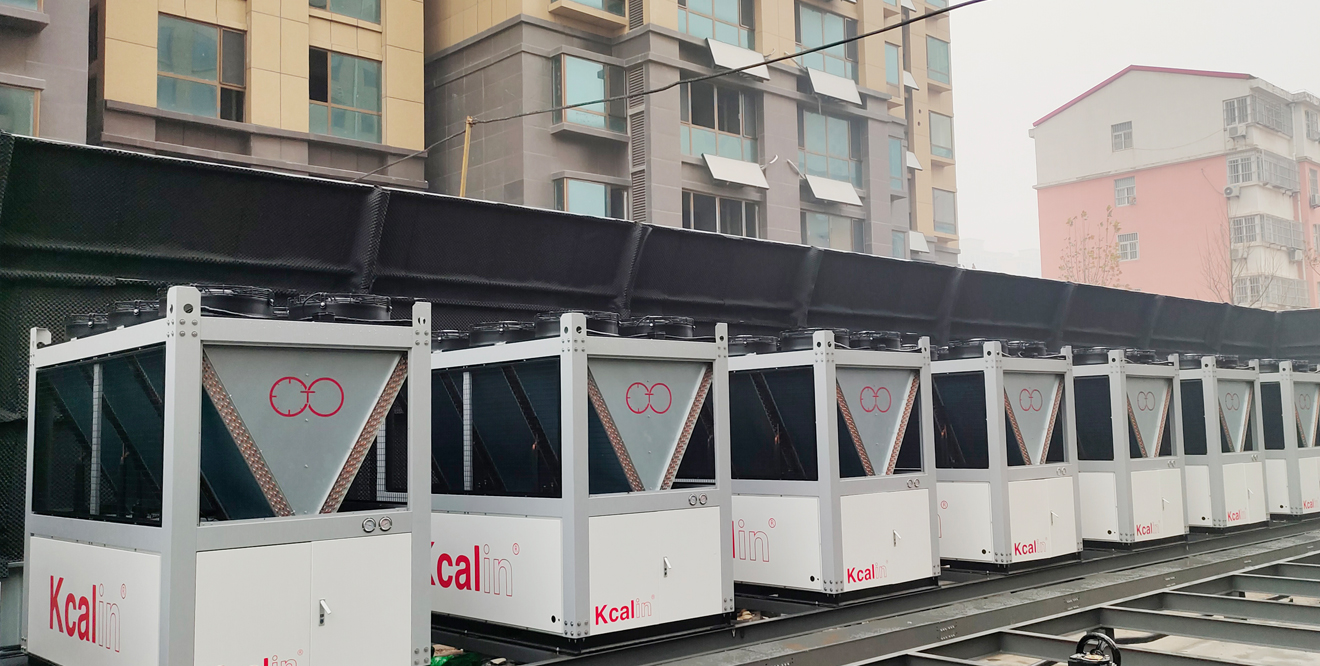Air cooled heat pump units are efficient and energy-saving heating and cooling equipment widely used in residential communities, office buildings, commercial centers, and other places. However, with the popularization of air-cooled heat pump units, their impact on the environment of residential areas has gradually attracted people's attention.
1、 Noise impact
Noise source: During the operation of air-cooled heat pump units, certain noises are generated, mainly from components such as compressors, fans, and pipeline vibrations. Especially at night, noise may interfere with the rest and daily life of residents.
The scope of noise impact: The impact of noise is mainly concentrated in residents near the unit, and residents far away are less affected. The propagation of noise is also influenced by factors such as installation location, reflection from surrounding buildings, and sound absorption effects.
Noise control measures:
To reduce the impact of noise on residents, the following measures can be taken:

Choose a low-noise model: Choose an air-cooled heat pump unit with a low-noise design to reduce noise from the source.
Reasonable installation location: Install the unit in a place far away from residential areas, such as rooftops, basements, or independent computer rooms.
Sound insulation measures: Install sound barriers or covers around the unit to reduce noise transmission.
Regular maintenance: Regularly inspect and maintain the unit to ensure its normal operation and reduce the increase in noise caused by equipment failures.
2、 Air quality impact
The working principle of heat pump units
The air-cooled heat pump unit absorbs heat from the air for cooling or heating, and usually does not directly emit harmful gases, with little direct impact on air quality.
Indirect impact
Although the air-cooled heat pump unit itself does not produce a large amount of harmful gases, its working process may lead to air drying and heat island effects. Especially in summer, the hot air discharged during the operation of the unit may increase the temperature of the surrounding environment, forming a local heat island effect and affecting the microclimate of the community.
Measures to improve air quality:
To reduce the indirect impact of air-cooled heat pump units on air quality, the following measures can be taken:
Greening environment: Planting green plants around the unit can absorb harmful substances in the air, improve air quality, and help alleviate the heat island effect.
Optimize ventilation: Through reasonable building design and air duct layout, enhance air circulation within the community and reduce the accumulation of hot air.
Regular cleaning: Regularly clean the filters and radiators of the unit to maintain efficient operation of the equipment and reduce negative impacts on the environment.
3、 Energy consumption and environmental impact
Energy consumption: As an efficient refrigeration and heating equipment, air-cooled heat pump units have relatively low energy consumption and can effectively reduce the energy consumption of residential areas. Compared to traditional electric heating or gas heating systems, air-cooled heat pump units have significant energy-saving advantages.
Environmental benefits: Due to the use of heat in the air for cooling and heating, air-cooled heat pump units reduce dependence on fossil fuels, thereby reducing greenhouse gas emissions, which contributes to environmental protection and sustainable development.
Measures to improve energy utilization efficiency
In order to further improve the energy utilization efficiency of air-cooled heat pump units, the following measures can be taken:
Optimize system design: Based on the actual needs of the community, design a reasonable heating and cooling system to avoid energy waste.
Intelligent control: Adopting an intelligent control system, the operation status of the unit is automatically adjusted based on outdoor temperature and indoor demand, improving energy utilization efficiency.
Regular maintenance: Regular maintenance and upkeep of the unit to ensure efficient operation of equipment and avoid energy waste caused by equipment aging or malfunctions.
4、 Installation aesthetics and space utilization
Installation location: The air-cooled heat pump unit is usually installed on the roof, balcony, or ground, which has a certain impact on the overall aesthetics and space utilization of the community. If the installation location is not selected properly, it may affect the daily life and visual experience of residents.
Aesthetic optimization measures
To reduce the impact of air-cooled heat pump units on the aesthetics of the community, the following measures can be taken:
Reasonable design of installation location: When installing the unit, full consideration should be given to its impact on the overall aesthetics of the community, and suitable locations should be selected, such as roofs, basements, or equipment rooms.
Beautification treatment: Properly beautify the unit, such as installing guardrails, covering with green plants, or spraying colors that coordinate with the environment, to better blend with the surrounding environment.
Reduce footprint: Choose a compact design unit to reduce its footprint and improve the space utilization of the community.
As an efficient and energy-saving heating and cooling equipment, air-cooled heat pump units have energy-saving and environmental benefits, but they also have a certain impact on the community environment. By adopting reasonable measures such as noise control, air quality improvement, energy utilization optimization, and aesthetics optimization, the negative impact of air-cooled heat pump units on the community environment can be effectively reduced, and the quality of life of residents can be improved.







Comment